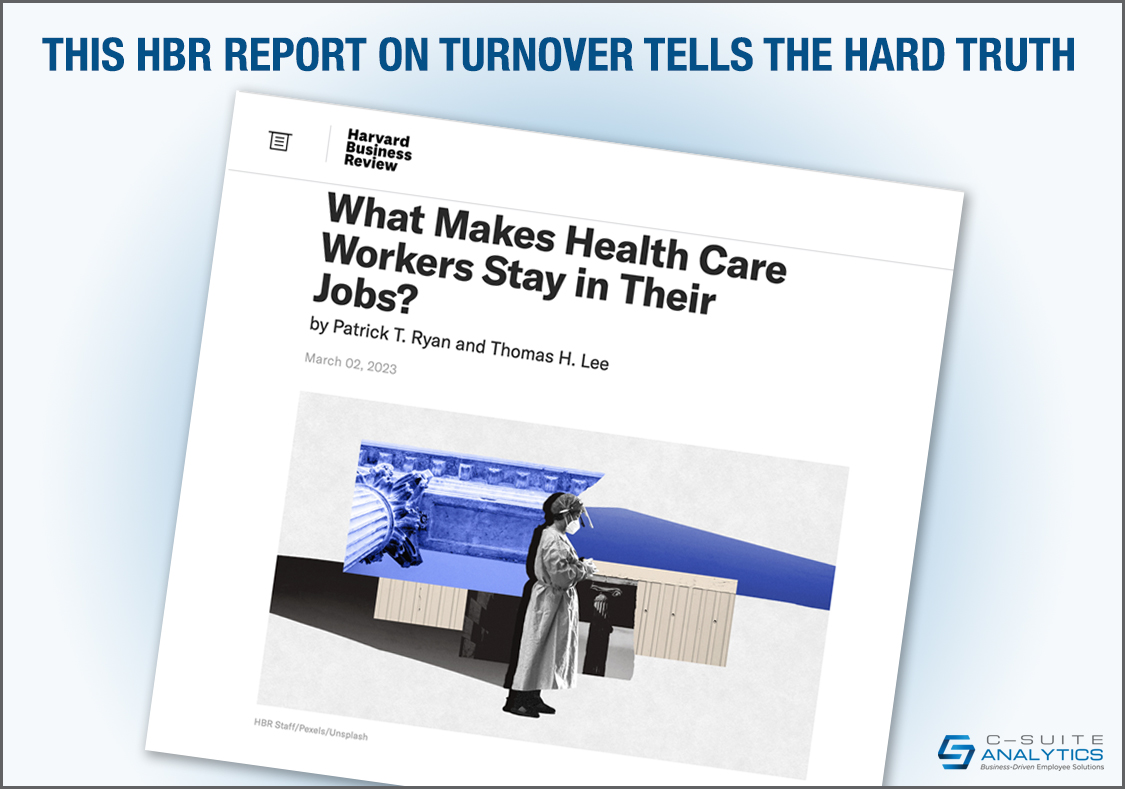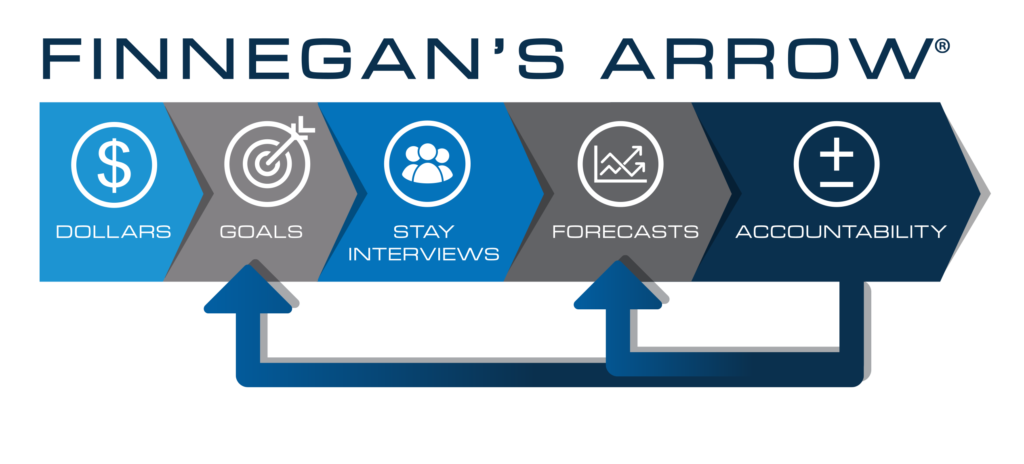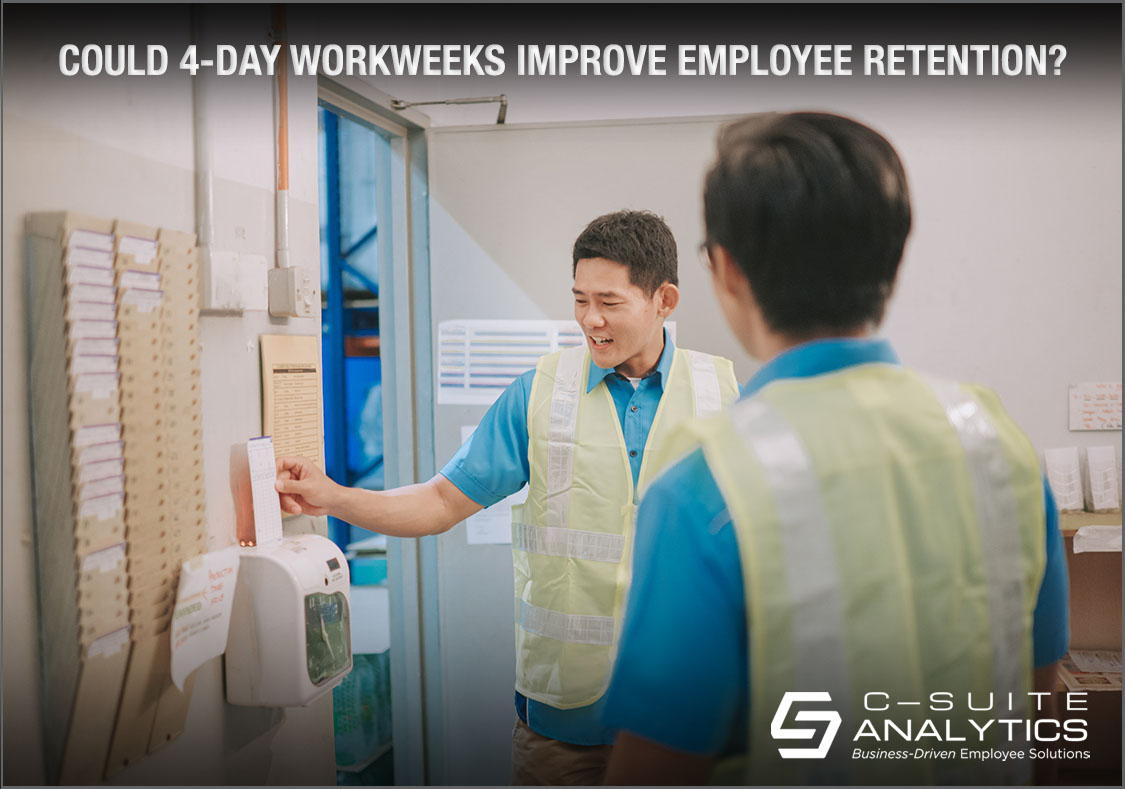According to the National Education Association, a full 600,000 teachers have already left teaching since January 2020, and a recent NEA poll indicated 55% more will quit prematurely. So, teachers are fast becoming a very talented recruiting pool.
This HBR Report On Turnover Tells the Hard Truth

The Harvard Business Review has a long-established reputation as the leading deep-thinking research publication for organizations to reach their highest performance levels. And the report I’ll describe here certainly meets that standard.
Don’t let the article’s title stop you from reading further. What Makes Health Care Workers Stay in Their Jobs?[i] provides one key retention instruction for executives of all industries:
The data suggests that leadership matters as never before – not just at the C-suite level but also at the front lines where managers really determine how organizational culture feels for employees. For example, there can be vast differences in caregiver morale in two patient care units that are physically adjacent to each other but have different nurse managers.
Healthcare is Not the Only Industry this Retention Article Applies To
Here’s a real-life manufacturing example. A client company builds trailers in nine factories across the U.S, with turnover so high that half their new hires quit in the first 60 days. We asked the executives to accept a goal to retain 80% of their new hires at 60 days versus the current 50% which required massive improvement. The corporate director of manufacturing said “yes” with one caveat: that we involve the team leads as much as the supervisors in our solutions, meaning those team leads would conduct Stay Interviews with their teams and also be accountable for achieving that goal.
We began with a plant in rural mid-Pennsylvania…and I recall my first reaction when the team leads entered the training room. Sloppy dress, “body jewelry” throughout, and men with unkempt hair and scraggly beards. And we were meeting during the night to accommodate shifts. But once that group understood we were there to help them cut their work-distracting turnover, they dug in on learning Stay Interviews and delivering them to their teams.
The 60-day turnover improvement happened because those team leads were treated like first-line supervisors, even though they were non-exempt employees and had never been trained in supervision before. They facilitated Stay Interviews for each new hire on their fifth day and then after their sixth week, knowing they had to retain that new employee for a full 60 days. They also participated in weekly meetings with each plant’s recruiter, new-hire trainer, and the full supervisory team to specifically discuss how that group would win by coaching each new hire to stay for 60 days…and at the same time review how they had failed as a team to retain anyone who had left.
No Matter the Industry, First-Line Supervisors are Biggest Impact on Retention and Engagement
In last week’s report I provided a deep dive on how first-line supervisors are not only the pivotal organizational piece for employee retention, but also that Gallup’s research tells us that first-line supervisors drive a full 70% of employee engagement based on their day-to-day actions. These findings alone should revolutionize the way every organization approaches turnover and engagement. Think of it this way:
- Is it pay? Nope
- Benefits? Nope
- Employee appreciation week? Nope
You get the idea. And every bit of this organization-bending research has been integrated into this turnover solution model that we apply to consistently cut our clients’ turnover by 20% and more:

- Dollars means convert turnover from percentages to dollars to speak the language of your CEO and also alert your CFO to participate in solutions. (https://c-suiteanalytics.com/cost-calculator/)
- Goals refers to studying past turnover data to establish retention goals for all turnover and new-hire turnover.
- Stay Interviews are then the keystone solution, to train leaders on all levels to ask five rightly-researched questions by applying listening, probing, and note-taking such that each leader will build a customized retention plan for each employee.
- Forecast then directs those same leaders to forecast how long each employee will stay.
- Accountability then follows to ensure those leaders are held accountable for achieving their turnover goals and developing accurate forecasts, the same metrics organizations use to drive their sales teams to succeed.
Way, way back during Bill Clinton’s first presidential campaign, his advisor James Carville coined a phrase that lives on today in the political world, “It’s the economy, stupid”. Let’s leave out that last word and instead say, “It’s the supervisors”.
You Can Cut Turnover by 20% or More, No Matter Your Industry
There is an established solution for employee turnover…start here to learn our comprehensive turnover solution, and watch the 2-minute video to open your eyes to fresh thinking for cutting turnover 20% and more. Then schedule a conversation with me at DFinnegan@C-SuiteAnalytics.com.
[i] Harvard Business Review, What Makes Health Care Workers Stay in Their Jobs?, March 2nd, 2023 by Patrick T. Ryan and Thomas H. Lee.



